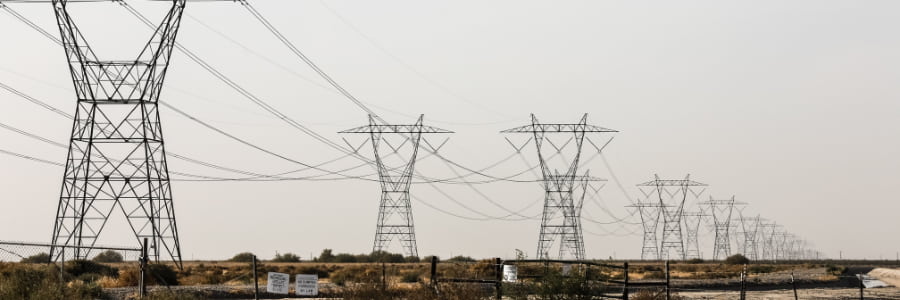California energy customers have seen electricity rates increase dramatically in recent years. For example, Pacific Gas and Electric Company (PG&E) implemented four rate increases for all customers in 2024 alone.
PG&E is far from alone. Energy companies struggle to keep pace with surges in electricity demand as ageing grids, increasing extreme weather events, and new types of energy units challenge existing setups. In many cases, there sems to be little no choice but to pass some of the growing costs on to consumers.
Utilities worldwide face similar challenges. According to an International Energy Agency report, global electricity prices rose by an average of 15%, while transmission costs in regions like Europe increased by up to 25%, adding unprecedented pressure on utility companies and their customers.
An increased focus on energy flexibility could provide a large part of the answer to the challenges and similar energy risks. For utilities, this approach strengthens grid reliability, cuts costs, and supports emissions reduction goals. For customers, it offers cheaper energy and more control.

There is little doubt that the current energy infrastructure needs a major upgrade. Analysis from Rystad Energy suggests that utilities could spend US$3.1 trillion on grid upgrades between now and the end of 2030.
One core reason is that the current grid infrastructure was not constructed to accommodate today’s dynamic energy landscape. New renewable assets, EVs, heat pumps, and an increase in severe weather incidents all led to increasingly risk-filled and complex supply and demand.
Additionally, Utilities must enable consumers to connect distributed energy resources (DERs) like solar panels, EVs, and battery storage to the grid.
Simultaneously, utilities are facing compliance issues. For example, in the US, where the Federal Energy Regulatory Commission (FERC) Order 2222 aims to facilitate DER participation in wholesale markets. However, full integration may take years, with some utilities not expecting compliance until 2029.
The result is higher operational costs for utilities and, in many cases, a need to pass some of those costs on to consumers.
In this context, energy flexibility provides a more cost-effective alternative.

Energy flexibility generally refers to the ability to adjust power generation and energy demand in response to external factors. These factors include electricity prices, grid conditions, demand or production changes, and market signals. Energy flexibility helps maintain energy balance by matching supply with demand in real time.
Energy flexibility can happen across all stages of energy production, transportation, and use. However, we often speak of three distinct, complementary areas:
By leveraging energy flexibility, utilities and customers can optimize costs, enhance grid stability, and accelerate the shift to a sustainable, low-carbon energy system.

Briefly summarised, energy flexibility is a way for utilities to balance supply and demand while minimizing costs and optimizing infrastructure use.
One example relates to backup generators and load balancing. Sudden shifts in energy demand may require starting up backup generators. These generators are often expensive – and run on fossil fuels. In short, the approach is costly to operate and inefficient for short-term energy demands.
The UK provides a good example. The nation saw rising grid balancing costs reach £2.65 billion in 2021. A significant portion of the fees go to backup generators. With intermittent renewable energy sources like wind and solar accounting for more than 50% of new capacity additions, managing energy variability without relying on backup generators is critical.
Flexibility solutions like demand response or energy storage allow utilities to adjust demand or use stored energy, avoiding the expense of running backup generators.
Flexibility also enables utilities to use existing infrastructure better, dynamically adjust grid operations, ease strain during peak demand, and reduce wear on ageing assets. This approach extends the lifespan of infrastructure and defers costly upgrades.

For utility customers, flexibility has upsides, like reducing energy costs and contributing to a more sustainable energy system.
Adjusting when and how much electricity to consume reduces costs. It also helps to balance supply and demand more effectively.
One way to achieve this is through demand response (DR) programs that incentivize energy use during off-peak hours or reward participation in demand response initiatives.
Time-of-use tariffs, which encourage energy consumption when electricity is cheaper and supply is abundant, further empower customers to save money. For example, India plans to strengthen these tariffs in 2024 to align energy use with peak solar production hours, offering significant savings opportunities.
Additionally, flexibility programs improve electricity security by preventing costly network reinforcements and ensuring a stable energy supply. Customers gain access to personalized energy solutions, such as smart energy devices and tailored pricing plans, designed to meet their specific needs and consumption patterns.

Getting to true energy flexibility requires digital and software upgrades across energy systems. The steps include integrating and optimizing distributed energy resources (DERs), which range from large commercial and industrial customers to individual households.
This sounds like a lot, but it is part of an ongoing, necessary shift, with much of the hardware and software being more cost-effective than other options – and available.
Smart meters should be highlighted from a hardware standpoint. They play a pivotal role in this transformation, providing granular data that allows utilities to predict and prevent power outages, improve energy distribution, and support the seamless integration of renewable energy.
Regarding software, energy companies and utilities need agile, integrated platforms for real-time monitoring and control of grid assets. These platforms can optimize grid operations, ensuring that distributed energy resources (DERs) are efficiently managed as customer needs evolve. Advanced smart charging of electric vehicles and DERMS systems are two examples. Both can be integrated cost-effectively and at speed through collaborating with proven energy partners.
The potential benefits are huge, For example, in Germany, electric vehicles, heat pumps, and home energy storage systems could make 100 terawatt-hours of electricity demand flexible by 2035—equivalent to 10% of total electricity consumption. This flexibility could save the electricity system €4.8 billion annually by enabling the cost-effective use of renewable energy and reducing the strain on grid infrastructure.